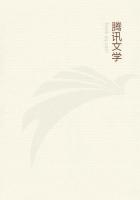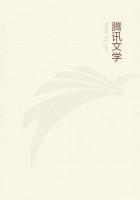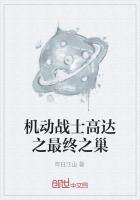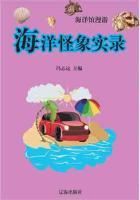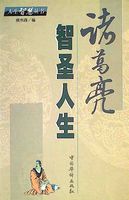There are many species of the purple murex; and some are large, as those found off Sigeum and Lectum; others are small, as those found in the Euripus, and on the coast of Caria. And those that are found in bays are large and rough; in most of them the peculiar bloom from which their name is derived is dark to blackness, in others it is reddish and small in size; some of the large ones weigh upwards of a mina apiece. But the specimens that are found along the coast and on the rocks are small-sized, and the bloom in their case is of a reddish hue. Further, as a general rule, in northern waters the bloom is blackish, and in southern waters of a reddish hue. The murex is caught in the spring-time when engaged in the construction of the honeycomb; but it is not caught at any time about the rising of the dog-star, for at that period it does not feed, but conceals itself and burrows. The bloom of the animal is situated between the mecon (or quasi-liver) and the neck, and the co-attachment of these is an intimate one. In colour it looks like a white membrane, and this is what people extract; and if it be removed and squeezed it stains your hand with the colour of the bloom. There is a kind of vein that runs through it, and this quasi-vein would appear to be in itself the bloom. And the qualities, by the way, of this organ are astringent. It is after the murex has constructed the honeycomb that the bloom is at its worst. Small specimens they break in pieces, shells and all, for it is no easy matter to extract the organ; but in dealing with the larger ones they first strip off the shell and then abstract the bloom. For this purpose the neck and mecon are separated, for the bloom lies in between them, above the so-called stomach; hence the necessity of separating them in abstracting the bloom. Fishermen are anxious always to break the animal in pieces while it is yet alive, for, if it die before the process is completed, it vomits out the bloom; and for this reason the fishermen keep the animals in creels, until they have collected a sufficient number and can attend to them at their leisure. Fishermen in past times used not to lower creels or attach them to the bait, so that very often the animal got dropped off in the pulling up; at present, however, they always attach a basket, so that if the animal fall off it is not lost.
The animal is more inclined to slip off the bait if it be full inside;if it be empty it is difficult to shake it off. Such are the phenomena connected with the porphyra or murex.
The same phenomena are manifested by the ceryx or trumpet-shell;and the seasons are the same in which the phenomena are observable.
Both animals, also, the murex and the ceryx, have their opercula similarly situated-and, in fact, all the stromboids, and this is congenital with them all; and they feed by protruding the so-called tongue underneath the operculum. The tongue of the murex is bigger than one's finger, and by means of it, it feeds, and perforates conchylia and the shells of its own kind. Both the murex and the ceryx are long lived. The murex lives for about six years; and the yearly increase is indicated by a distinct interval in the spiral convolution of the shell.
The mussel also constructs a honeycomb.
With regard to the limnostreae, or lagoon oysters, wherever you have slimy mud there you are sure to find them beginning to grow.
Cockles and clams and razor-fishes and scallops row spontaneously in sandy places. The pinna grows straight up from its tuft of anchoring fibres in sandy and slimy places; these creatures have inside them a parasite nicknamed the pinna-guard, in some cases a small carid and in other cases a little crab; if the pinna be deprived of this pinna-guard it soon dies.
As a general rule, then, all testaceans grow by spontaneous generation in mud, differing from one another according to the differences of the material; oysters growing in slime, and cockles and the other testaceans above mentioned on sandy bottoms; and in the hollows of the rocks the ascidian and the barnacle, and common sorts, such as the limpet and the nerites. All these animals grow with great rapidity, especially the murex and the scallop; for the murex and the scallop attain their full growth in a year. In some of the testaceans white crabs are found, very diminutive in size; they are most numerous in the trough shaped mussel. In the pinna also is found the so-called pinna-guard. They are found also in the scallop and in the oyster; these parasites never appear to grow in size.
Fishermen declare that the parasite is congenital with the larger animal. (Scallops burrow for a time in the sand, like the murex.)(Shell-fish, then, grow in the way above mentioned; and some of them grow in shallow water, some on the sea-shore, some in rocky places, some on hard and stony ground, and some in sandy places.) Some shift about from place to place, others remain permanent on one spot. Of those that keep to one spot the pinnae are rooted to the ground; the razor-fish and the clam keep to the same locality, but are not so rooted; but still, if forcibly removed they die.
(The star-fish is naturally so warm that whatever it lays hold of is found, when suddenly taken away from the animal, to have undergone a process like boiling. Fishermen say that the star-fish is a great pest in the Strait of Pyrrha. In shape it resembles a star as seen in an ordinary drawing. The so-called 'lungs' are generated spontaneously. The shells that painters use are a good deal thicker, and the bloom is outside the shell on the surface. These creatures are mostly found on the coast of Caria.)The hermit-crab grows spontaneously out of soil and slime, and finds its way into untenanted shells. As it grows it shifts to a larger shell, as for instance into the shell of the nerites, or of the strombus or the like, and very often into the shell of the small ceryx. After entering new shell, it carries it about, and begins again to feed, and, by and by, as it grows, it shifts again into another larger one.
16

